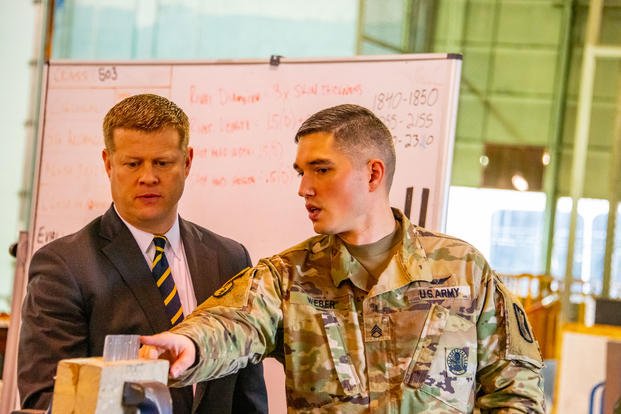The U.S. Army may field the first long-range cannons, developed under the new modernization strategy, in just three years, Army Under Secretary Ryan McCarthy said Wednesday.
The Extended Range Cannon Artillery (ERCA), a technology that extends the range of 155mm artillery to 70 kilometers, will be among the first futuristic systems scheduled to be ready for fielding under the Army's top modernization priority -- long range precision fires, he said.
The Army plans to "field some batteries" with ERCA in the "fiscal 2022-2023 time frame," McCarthy told an audience Wednesday at the 10th Annual Defense Programs conference hosted by McAleese and Associates.
"We have gone through some experiments lately where we have reached 70 kilometers with precision," he said. "We are looking at some munitions that industry is in the process of developing, where they say they can go north of 100 kilometers."
McCarthy's comments came a day after the Army released its fiscal 2020 budget request, a spending plan that cuts or kills 186 legacy programs over the next five years to free up funding for the service's six modernization priorities, which include long-range precision fires, a next-generation combat vehicle, future vertical lift, a mobile network, air and missile defense, and soldier lethality.
"We made some very hard choices in this budget," McCarthy said, adding that the Army cut funding to programs such as the Joint Light Tactical Vehicle, the Bradley Fighting Vehicle and the CH-47 Chinook to free up more than $30 billion for future modernization programs.
In this budget, the service will see $2.5 billion in savings from those 186 divestments, but much of the savings won't come until the end of the 2020-2024 Future Years Defense Program, or FYDP.
Funding for the six modernization priorities will increase each year toward the end of the FYDP, said McCarthy, who offered a timeline preview for some high-profile modernization programs.
The fiscal 2020 budget funds the first four battalions' worth of mobile short-range air-defense, or MSHORAD, under the air and missile defense priority.
Army officials are "really excited" about the progress the service has made developing a new mobile network, McCarthy said.
"We have an experiment this summer at the National Training Center [at Fort Irwin, California] in the June-July time frame ... that will be key for us as a decision point of, do we have the right solution set or not," he said. "And we will be able to make that determination and really put the hammer down in 2021."
The future attack reconnaissance aircraft and long-range assault aircraft programs under future vertical lift are scheduled to receive "substantial increases to their funding in the 2022-2023 timeframe," McCarthy said.
The Army's next-generation combat vehicles "are probably going to be on the other side of the FYDP in the 2025-2026 time frame," he said.
"You are going to be in the heart of that experiment and test [phase] toward the back end, so you will see the funding really go up. We will be buying tranches of capability and testing it out," McCarthy said. "So, increases this year, but the pipes really start to open up by the middle of the FYDP."
-- Matthew Cox can be reached at matthew.cox@military.com.










